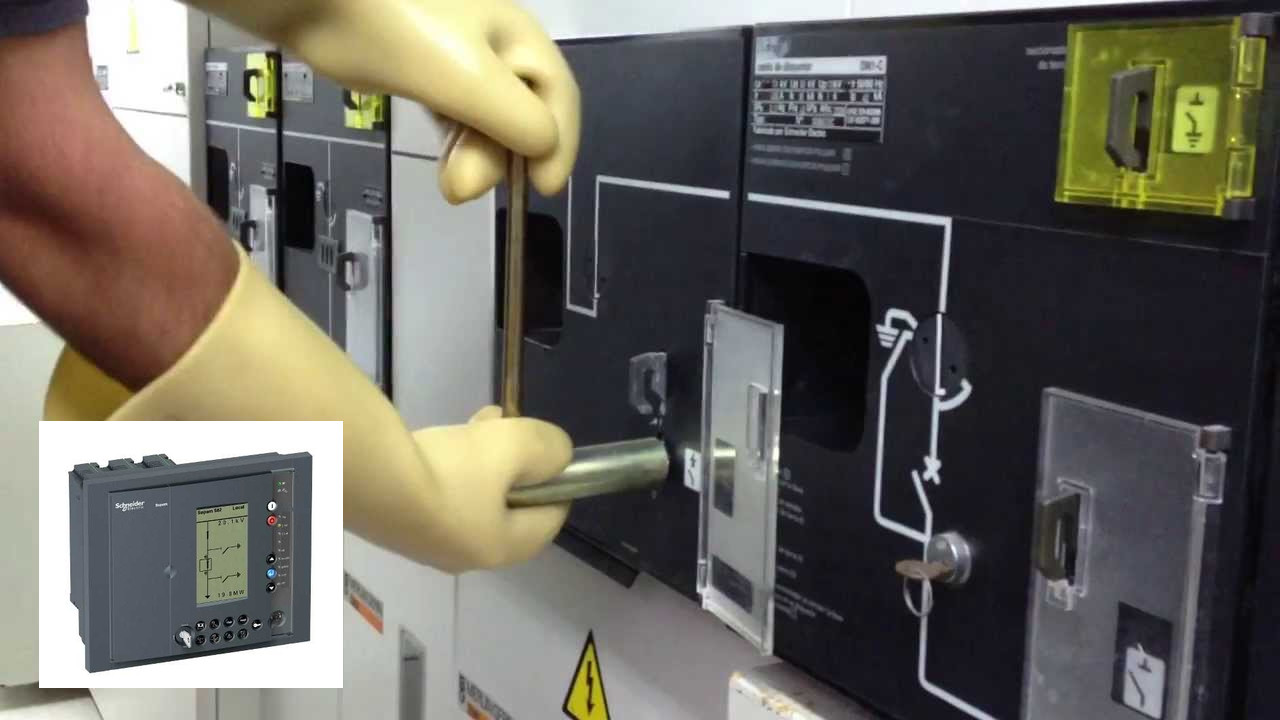Most common faults in Media engines are voltage insulation faults (80-90%) and failure due to mechanical causes (10-15%).
Insulation defects are mostly caused by dynamic stresses associated with overheating at starting of engines (due to overload problems or cooling). That's why at any protection of medium voltage motor we should especially take care of these aspects. This is done primarily with the protections:
- Phase overcurrent 50/51. Inverse Definite minimum time curve (IDMT) to cover sudden and high overload. A threshold will be programmed with a definite time curve to protect against short circuit phenomena.
- Thermal Image 49: Thermal overload protection against overloads calculating engine warm through the consumption current. It's primarily the protection will prevent surges from damaging the motor insulation allowing proper operation (absorbing temporary overloads).
- Long start and lock rotor (48 / 51LR). Protection monitors the motor direct start within a specified time (starting time). Once the engine has started this same also monitors if the motor rotor is locked (when the rotor is blocked, the intensity becomes similar to the pickup).
- Limiting the number of starts (66). This protection prevents a higher number of marked consecutive starts by the engine manufacturer. We have to understand at every start occurs a very high level of current and this leads to heating of the rotor and stator.
- Probe temperature reading (PT100). Is always advisable to have direct information engine temperatures, since the actual heating of the engine is higher than caused only by the consumed current due to problems in the cooling system (for example dirty cooling fins).
- Undervoltage protection (27). This protection monitors voltage: Must be in a minimum value at starting, since the starting current will increase as the voltage is lower than the nominal and torque decrease (losses in the rotor increase).
- Maximum protection against reverse current component (46). For unbalanced feeds, runs with a burst phase or internal short circuits in the windings of a motor, this protection can detect the problem, preventing excessive heating in the rotor, since the reverse component of the current generates unwanted currents in the rotor.
Besides the mentioned protections that protect the motor against overload phenomena, short circuit and overheating, any protection of medium voltage motor must also include:
- Protection 50N / 51N for detecting ground faults. This protection monitors stator faults to ground (a common default). Detection may be accomplished by addition of currents or using toroidal device on cable. The latter option is more desirable because in the neutral core has usually very high impedance, limiting the earth fault currents to values below 10 A. We must remember that earth fault currents higher than 20 A for more than 1 second can damage the magnetic plate in rotating machinery (such as motors). When the engine is at isolated neutral system or capacitive cable charging current is high compared to resistance grounding current is mandatory the use of overcurrent protection directional earth (67N).
- In engines of 2000 kW active power (or higher) use 87M differential protection is advised. This protection act very quickly to internal motor faults, prolonging duration and avoiding defects. This will entail a cheaper engine repair. These differential protections should be with percentage of external short circuit detection, detection of saturation of current transformers and transformer energization (presence of 2nd harmonic). In this way we ensure the stability of protection and avoid nuisance tripping. Protection shall incorporate a high instantaneous threshold leakage protection above 5.5 Id to ensure quick shots at high asymmetric defects.



